Sydney Smith Lee (September 2, 1802 – July 22, 1869) was a member of the Lee Family and is buried in Christ Church Cemetery, along with twenty-six other individuals with the Lee surname. He was the older brother of Robert E. Lee (January 19, 1807 – October 12, 1870). Sydney’s legacy includes his service as a United States naval officer. One of his key achievements was commanding the USS Mississippi (1841), a paddle frigate that served as the flagship of Commodore Matthew C. Perry during his significant mission to open Japan in 1853. Additionally, on March 24, 1847, Sydney was ordered off the USS Mississippi to command a 24-pounder during the siege of Veracruz in the Mexican War. His brother Robert E. Lee joined him, serving in the United States Army.
In 1860, the first official Japanese Embassy arrived in the United States, traveling from San Francisco to Washington D.C. This mission was initiated by Japan’s Tokugawa government to present treaty ratifications based on 1858 agreements. These agreements were made between Townsend Harris, the first American ambassador to Japan, and the Japanese government. The delegation’s journey involved traveling aboard the Powhatan to Panama, crossing the Isthmus by train, and then heading to Washington, D.C.
Sydney Smith Lee played a significant role during this period. As documented by Dallas Finn in “Guest of the Nation: The Japanese Delegation to the Buchanan White House,” Lee was among a group of Naval officers chosen to escort the Japanese delegation. This account was published in White House History, Number Twelve, Winter 2003, by the White House Historical Association, Washington, D.C., on page 20.
Lee was joined by two officers: Captain Samuel Francis Du Pont, a hero of the Mexican War, and David Dixon Porter, an officer praised by Commodore Perry who was later buried at Arlington National Cemetery. This trio guided the Japanese delegation through the official ceremonies in Washington. Their journey included several events, including a reception in the East Room of the White House on May 17, 1860.
At this event, President Buchanan, his cabinet, and other attendees greeted the Japanese delegates. Due to the linguistic barrier – the Japanese delegates knew only Dutch among Western languages – interactions were facilitated by translating from Japanese Dutch to American English and back.
The visit, from their arrival in San Francisco to their engagements in Washington D.C., highlighted the importance of international diplomacy and the efforts of both nations to build a relationship. At the end of June, the Japanese delegation returned to Japan.
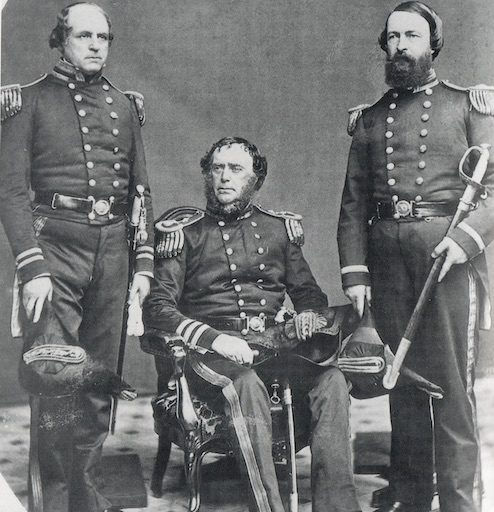
Civil War Allegiances
In April 1861, following Virginia’s secession declaration, he decided to resign from his post, and on April 22nd, he was officially dismissed. Coincidentally, on the same day, his brother, Robert E. Lee, assumed command of all the Commonwealth of Virginia’s forces. Subsequently, he received a commission as a Commander in the Confederate Navy and was entrusted with the leadership of the Gosport Navy Yard. Under his guidance, the charred remains of the USS Merrimack were skillfully transformed into the formidable ironclad warship known as the CSS Virginia.
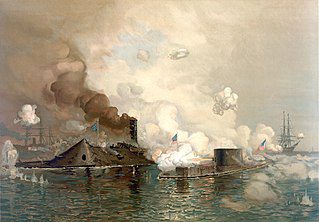
In May 1862, Lee assumed control of Drewry’s Bluff, a strategic 90-foot high bluff on the James River, about seven miles south of Richmond. This location, notable for a sharp bend in the river, made it an excellent choice for defense. On May 15, 1862, during a fierce bombardment by five Union gunboats, including the renowned USS Monitor, both his brother Robert E. Lee and Jefferson Davis, the President of the Confederate States of America, were present. The fort withstood the intense five-hour battle and successfully held its ground.
The battle at Drewry’s Bluff held a particularly poignant irony, as it placed Lee, now a Confederate commander, in opposition to his old friend Samuel Francis Du Pont, who had risen to Admiral in the Union Navy. A remarkable story from this period was preserved in the Civil War reminiscences of Cazenove Gardner Lee. According to his account, at a wedding in the fall of 1860, when both men were still U.S. Navy captains, Lee had playfully slapped Du Pont on the back during a heated political discussion and joked, ‘Never mind if we have war, and I catch you out at sea I will blow you out of the water.’ Du Pont had replied with characteristic wit, ‘No, I would ask you on board to take a drink.’ This lighthearted exchange proved almost prophetic when Du Pont’s flagship nearly met its fate from Confederate shells at Drewry’s Bluff. Yet despite finding themselves on opposite sides of the conflict, these two former colleagues maintained their friendship throughout their lives (Guelzo & DeButts, 2021, pp. 100, 102).
Over the subsequent two years, Lee dedicated his efforts to fortifying and enhancing the defenses of Drewry’s Bluff, transforming it into a robust stronghold. Additionally, he employed the site as a training ground for the Confederate Navy Academy, preparing naval forces for their crucial roles in the ongoing conflict.
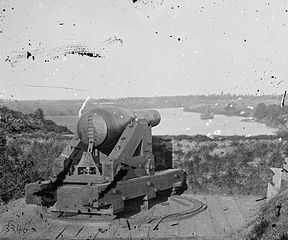
Personal Perspectives on the War
In 1863, Lee expressed strong disapproval of South Carolina’s actions that led the South into the complexities of secession. He voiced his frustration, even suggesting they should be “hanged” for their role. He also lamented his desire to remain in the old navy, implying that he regrets leaving his previous naval career.
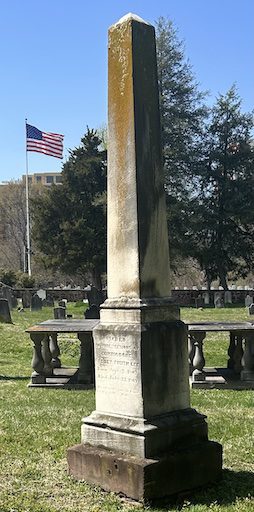
| Sacred to the memory of Commodore SYDNEY SMITH LEE Born Sept. 2, 1801 Died July 22, 1869 Blessed are the pure in heart for they shall see God |
| Sacred to the memory of ANNA MARIA MASON wife of Commodore S.S. LEE Born Feb. 26, 1811 Died November. 3, 1898 He giveth His beloved sleep |
Later Life and Burial
After the Civil War, Sydney Smith Lee tried his hand at farming at Smithland Plantation in Stafford County, Virginia, but was unsuccessful. His interactions with his younger brother, Robert E. Lee, were rare. They last saw each other on May 6, 1869, when they attended services together at Christ Church in Alexandria, Virginia. Unfortunately, Sydney passed away just a few months later, on July 22, 1869. General Lee arrived in Alexandria on July 24, 1869, two days too late to attend his brother’s funeral.
Family Connections
In 1834, Smith tied the knot with Anna Maria Mason Lee, affectionately known as “Nannie” (February 26, 1811 – November 3, 1898), who happened to be the sister of James Murray Mason, who is also buried in Christ Church Episcopal Cemetery. The couple was blessed with seven children, among them Fitzhugh Lee, who later became a prominent figure as a former Confederate general and the 40th Governor of Virginia from 1886 to 1890. Another notable child was Captain Sydney Smith Lee, Jr. (February 10, 1837 – April 15, 1888).
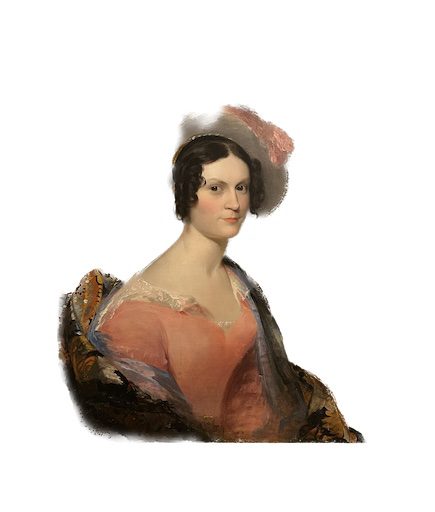
Nannie, or Anna Maria, lived a full life until 1898 and now rests in eternal peace beside her beloved husband in Lot 20:5. A dignified obelisk adorned with place stones bearing the initials “S.S.L.” and “A.M.L.” serves as a poignant marker, commemorating their final resting place.
Syndey Smith Lee, Jr.
Following his father’s footsteps, Lee Jr. served in the Confederate Navy, actively participating in various naval battles. He was part of the crew of CSS Louisiana in 1862 and later contributed to the missions of CSS Atlanta and Georgia from 1862 to 1864. He also saw action on CSS Rappahannock near France in 1864 and later served on CSS Shenandoah from October 1864 to November 1865. When the CSS Shenandoah finally struck her colors in Liverpool, England, on November 6, 1865, as she surrendered to British authorities, it marked the last formal surrender of Confederate forces at the end of the American Civil War.

After the war, Lee Jr. ventured into farming in Argentina, leading a solitary life as he never married. In 1888, he passed away and was laid to rest near his parents’ resting place.
| In memory of Capt. S.S. Lee son of Commodore S.S. & A.M. LEE born 1837 died 1888 Simply to Thy cross I cling. |
Sources of Information
- Cole, R. (2019). Light-Horse Harry Lee: The Rise and Fall of a Revolutionary Hero. Regnery History.
- Connolly, A. (Curator) & Deetz, K. (Director). Stratford at the Crossroads: Atlantic Cultures & The Creation of America. Stratford Hall. Home of the Lees of Virginia. Stratford, VA.
- Finn, D. (2003). Guest of the Nation: The Japanese Delegation to the Buchanan White House. White House History, (12). White House Historical Association.
- Guelzo, A. C., & DeButts, R. E. L. (2021). The Civil War Reminiscences of Cazenove Gardner Lee, 1861–1862. The Virginia Magazine of History and Biography, 129(1), 80–114. https://www.jstor.org/stable/26980028
- Gunston Hall. (n.d.). George Mason’s Descendants. Retrieved from https://web.archive.org/web/20090926055445/http://www.gunstonhall.org/library/masonweb/p6.htm#i256
- Hakenson, D. C. (2011). This Forgotten Land Volume II: Biographical Sketches of Confederate Veterans Buried in Alexandria, Virginia. Donald Hakenson.
- Johnson, A. E. (1994, July). Handsomest Man in the Confederacy. American Civil War.
- Lee, C. G., Jr. (1957). Lee Chronicle: Studies of the Early Generations of the Lees of Virginia. Thomson-Shore. Published for The Society of the Lees of Virginia.
- Office of Naval War Records, Navy Department. (1898). Officers in the Confederate States Navy, 1861-1865 (PDF). Government Printing Office.
- Pippenger, W. E. (1992). Tombstone Inscriptions of Alexandria, VA (Volume 3). Family Line Publications: Westminster, Maryland.
- United States National Park Service. (n.d.). Richmond Battlegrounds, Drewry’s Bluff. The official website of the United States National Park Service. Retrieved in 2023 from https://www.nps.gov/rich/learn/historyculture/drewrys-bluff.htm